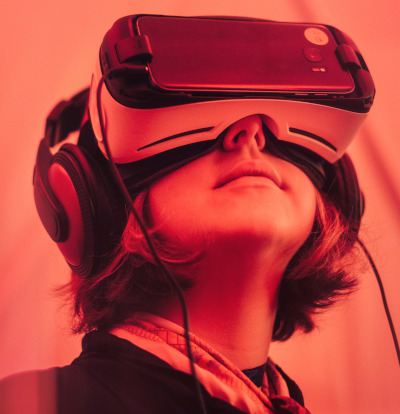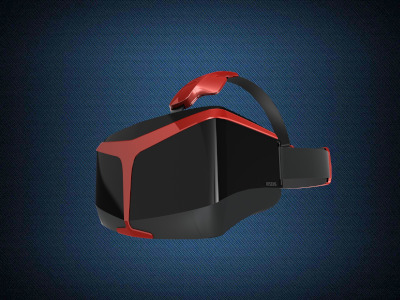An Open Letter from SpringboardVR Co-Founder, Will Stackable
The modern VR Arcade industry (outside of Asia) is just over two years old. It is still a baby industry. And for such a new industry, it is doing pretty well. Based on the largest industry survey to date, nearly two-thirds of VR Arcades are at break even or better right now. Great news!
That said, many VR Arcades are struggling to find the right combination of price point, overhead, customer experience, and content to be truly profitable. Some VR Arcades are seeing high utilization rates and growing profit margins and are expanding into multiple locations, while others are still struggling to find the sweet spot.
I talk to arcade operators every week and I’m blown away by how hard everyone is working to figure it all out. Part of the challenge is that in such a new industry, there is a serious lack of proven business models and very little real data. Most VR Arcades are making decisions based on guesses and by looking at pricing and business models of other VR Arcades. We experienced that firsthand. When we started one of the first arcades back in November of 2016 much of our business model was pure guessing. In a brand new industry, no good data existed. It took us months of losing money to START figuring out what we were doing wrong.
 The struggle is real. This is a new technology, a new industry, and a new business model. It has become common knowledge that in order to stay relevant (and to stay ahead of falling in-home prices), VR Arcades are going to have to innovate and offer more immersive and exciting experiences. Between our platform data, surveys, and talking to industry experts, I’m optimistic that VR Arcades can do quite well and have a place in the “immersive ecosystem”-both now and for years to come.
The struggle is real. This is a new technology, a new industry, and a new business model. It has become common knowledge that in order to stay relevant (and to stay ahead of falling in-home prices), VR Arcades are going to have to innovate and offer more immersive and exciting experiences. Between our platform data, surveys, and talking to industry experts, I’m optimistic that VR Arcades can do quite well and have a place in the “immersive ecosystem”-both now and for years to come.
In the next 3–5 years, I imagine we’ll see high-end out-of-home immersive experiences like Nomadic, Dreamscape, and The Void continue to develop, and of course better and more affordable immersive experiences for the home. The question then is. . . is there space for a “middle slice” of immersive experience that VR Arcades could own?
Take the movie industry as an example. Thousands of movie screens worldwide that can all play the same content at a higher-level of quality than customers can experience at home. The standard technology “unit” that makes this $39 billion dollar industry work is a projector, a giant screen, high-end audio and comfortable seats.
What would a standard “unit of VR” look like for the arcade industry?
The jury is still out. But it might look something like a treadmill, haptic suit, high-end controllers, top-shelf HMD, and a top of the line PC… think Ready Player One’s full body Immersion Rig. And if content creators had a standard “unit of VR” to develop for, they could create next level content that would draw even more people in.
Simon Revely from Figment Productions put it well, “We might be able to make great ‘VR films’ but we’ll never pay for them if we don’t have enough places to sell them. Avengers cost $350 million to make. And that can work when you have 171,755 cinema screens worldwide that made $40 billion in revenue last year. For VR we need to scale up the out-of-home distribution channels if we’re going to be able to make big budget content.”
I think that’s where VR Arcades could shine-by offering an experience that is affordable, accessible, in every neighborhood, and more immersive than you could ever have at home. In addition, VR Arcades need to offer a customer experience that could never be replicated at home. Multiplayer, tournaments, food and beverage, party play, and leader boards are all part of that picture.
More and more, content creators are building experiences specifically for VR Arcades. I’ve talked to a number of indie studios that are realizing that they can make good money developing content specifically for the out-of-home VR space. And while consumer VR headset utilization numbers keep dropping, the LBVRE (location based virtual reality) numbers continue to grow. In the last three months alone we’ve seen 100+ new arcades start using SpringboardVR and we’re tracking over 3 million minutes played on our platform monthly.
 There are currently 180+ titles right now on our platform that VR Arcades can license on a per-minute basis, including titles like Arizona Sunshine, Budget Cuts, Smashbox Arena, Space Pirate Trainer, Quivr, Skyfront, Richie’s Plank Experience, and more. And with content creators focusing more on content tailored for the out-of-home market, the experiences at VR Arcades will only get better.
There are currently 180+ titles right now on our platform that VR Arcades can license on a per-minute basis, including titles like Arizona Sunshine, Budget Cuts, Smashbox Arena, Space Pirate Trainer, Quivr, Skyfront, Richie’s Plank Experience, and more. And with content creators focusing more on content tailored for the out-of-home market, the experiences at VR Arcades will only get better.
I believe that the VR Arcade option will continue to be a positive one for content creators that want stable income in this gap period before we hit mass consumer adoption.
To wrap, while in-home adoption of VR has not grown as expected, out-of-home VR is picking up steam. And the industry is starting to realize that the first-time VR experience for an increasing number of people is going to be at a VR Arcade. Over the last six months alone we’ve recorded 13.9 million minutes played in VR Arcades across the globe-most of those minutes played by first time customers.
Consequently, thousands of VR Arcades in small towns and big cities around the world really are the “front lines” in the battle for mass consumer adoption. And while the Dave & Busters and IMAX’s of the world may get all the press, millions of people around the world are having their first experience of VR at their local VR Arcade.
My hope is that over the next 12 months, VR Arcades begin to work out some of the kinks, see next-level games made for out-of-home release, develop loyal customers, get better data to make better decisions and see even more operators hit profitability.
Those in VR Arcade industry are pioneers on a new frontier. My hope is that we all do everything we can to support each other along the way! Over the last six months alone we’ve recorded 13.9 million minutes played in VR Arcades across the globe-most of those minutes played by first time customers.
Takeaways:
- A majority of VR Arcades are at break-even point or better, but due to lack of industry resources and data, many are still struggling to nail down the most effective business model.
- Over the next 3–5 years, the landscape of the out-of-home will look vastly different, but with the right moves, the VR Arcade could thrive.
- In order to be successful, VR Arcades must provide a customer experience that could never be replicated at home.
- Content Creators are realizing that they can make good money developing content specifically for the out-of-home VR space.
- Over the next 12 months, millions of people will experience VR for the first time in a VR Arcade.
Sincerely,
Will Stackable, SpringboardVR Co-Founder

